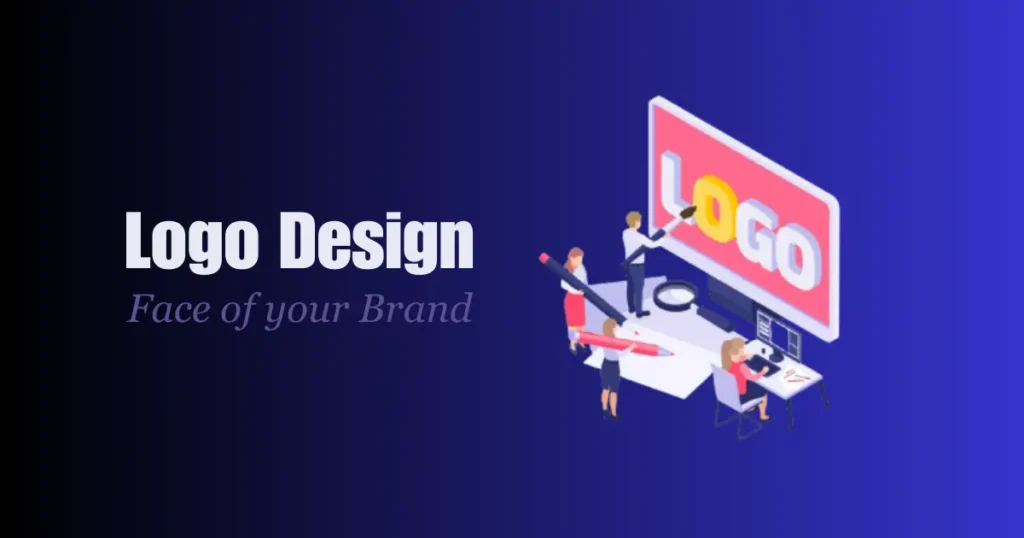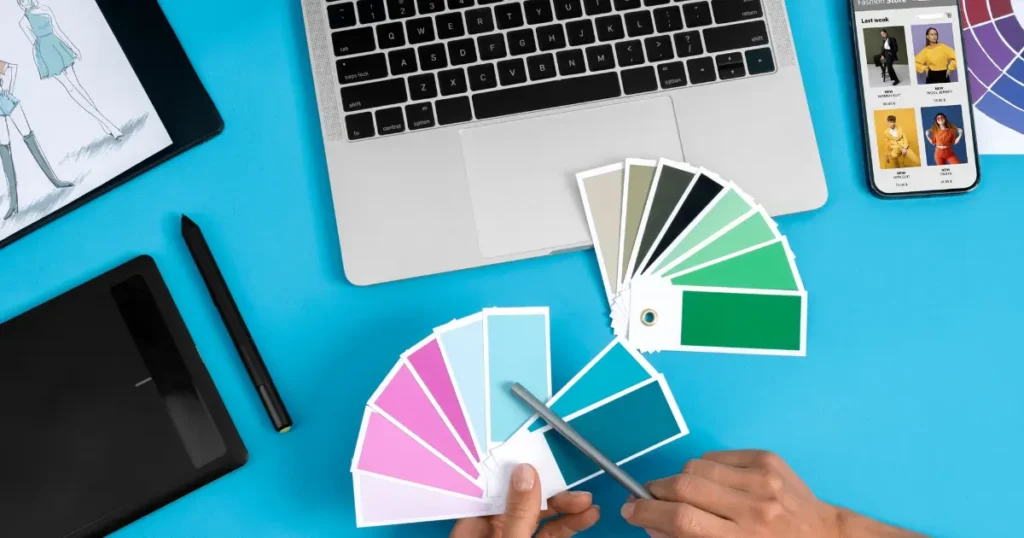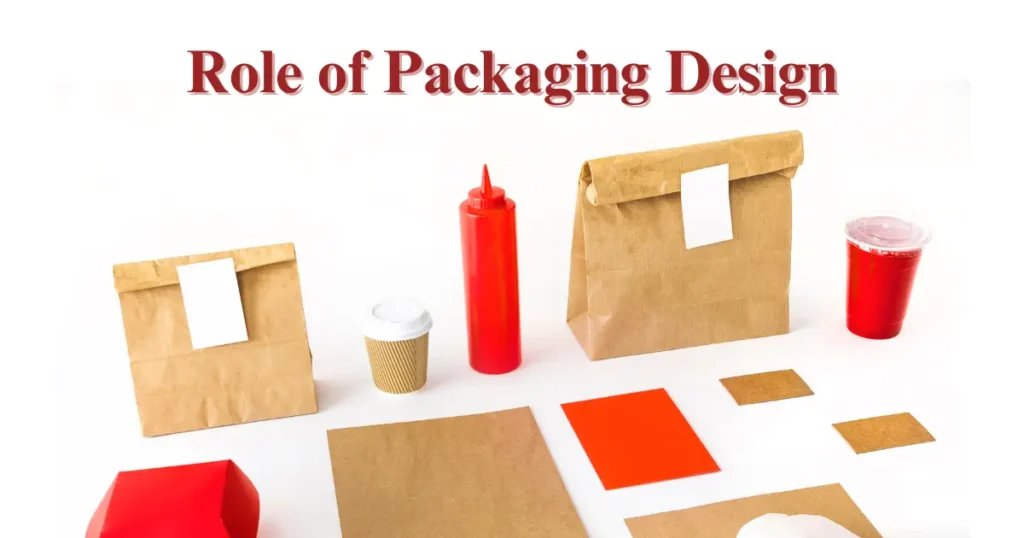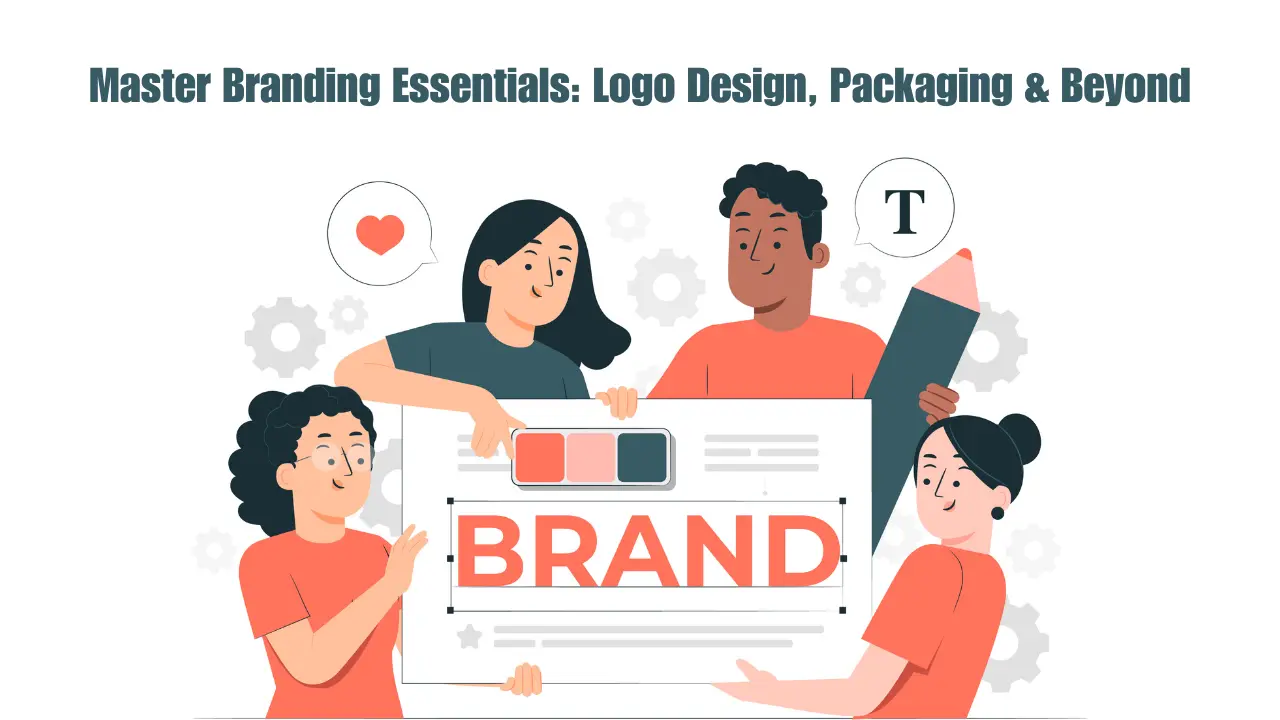Branding is more than just a logo or tagline; it’s the essence of how your business is perceived. In today’s competitive market, branding is the secret sauce that helps businesses stand out. Strong branding essentials plays a pivotal role in business success, from shaping customer trust to fostering loyalty.
Whether you’re a small business aiming to make an impact or a large company looking to sustain your reputation, branding is your golden ticket. A cohesive brand identity builds recognition, influences emotions, and connects with your target audience on a deeper level.
In this blog, we’ll explore branding essentials, starting from creating an effective logo design to understanding color psychology, crafting compelling messaging, and mastering packaging design. Get ready to elevate your brand and leave a lasting impression.
Key Takeaways
- Branding is more than just a logo; it’s a cohesive identity that builds trust, recognition, and loyalty.
- Elements like logo design, color palette, typography, messaging, and packaging work together to create a lasting brand impression.
- Understanding color psychology and choosing the right typography can significantly impact how your brand is perceived.
- Packaging design plays a crucial role in creating emotional connections and driving purchase decisions.
- Consistency across all branding elements and platforms is essential for maintaining a strong and memorable brand identity.
Table of Contents
The Foundations of Branding
Think of branding as your business’s personality—it’s what sets you apart in a sea of competitors. Branding isn’t just about flashy logos or catchy taglines; it’s the story you tell through visuals, tone, and experiences.
Why is Branding So Crucial in Today’s Market?
Because consumers are spoilt for choice! In a world of options, branding helps you stand out and stay memorable. It makes Apple synonymous with innovation, Nike with empowerment, and Coca-Cola with happiness.
Good branding builds recognition, fosters loyalty, and turns customers into advocates. It’s the invisible thread tying every interaction together, whether it’s your packaging, customer service, or marketing campaigns.
So, why settle for blending in when you can stand out? Nail your branding essentials , and you’ll do more than capture attention—you’ll win hearts and keep them coming back for more.
Read more about how branding contributes to your business success.
Key Components of Branding
Branding is the full experience your business offers. Here are the 5 key components every brand needs:
- Logo Design
- Color Palette
- Typography
- Brand Messaging
- Packaging Design
Together, these elements form a cohesive identity that resonates with your audience and builds loyalty.
Let’s explore each component in detail to understand them better and how they can help you build a strong brand identity.

Logo Design: The Face of Your Brand
Your logo is the face of your brand—the first thing people notice and the last thing they remember. It’s not just a design; it’s your brand’s identity distilled into a single visual.
A well-designed logo does more than look good; it tells a story. It symbolizes your brand’s values, mission, and personality in a way words often can’t. In a crowded market, your logo is your handshake with the world. It builds recognition, fosters trust, and sets you apart from competitors. Think of Apple’s sleek logo—it screams innovation—or McDonald’s golden arches, an instant invitation to comfort food.
Types of Logos
When it comes to logo design, there’s no one-size-fits-all. Different types of logos can communicate different messages about your brand. Let’s explore the three most common types of logos and what they can say about your business.
Symbolic Logos (Iconic)
These logos use a graphic symbol or icon to represent the brand. Think of the Apple logo—a simple, sleek apple that instantly evokes innovation. Symbolic logos are powerful because they convey meaning through visuals alone. They’re often simple, memorable, and effective at building strong brand recognition.
Wordmark Logos (Text-Based)
Wordmarks focus purely on the name of your business. Brands like Google and Coca-Cola rely on stylized fonts to communicate their identity. If your brand name is unique and easy to remember, a wordmark is a great choice. It’s all about making your name stand out with the right font and design.
Combination Logos (Symbol + Text)
As the name suggests, combination logos blend both symbols and text. Think of Adidas or Burger King. The graphic element paired with the business name creates versatility and recognition. These logos offer the best of both worlds, allowing you to communicate your brand’s identity while also making your name memorable.
Best Practices for Designing a Logo
Designing a logo is no small task—it’s a critical element of your brand identity. So, how can you create a logo that truly stands out? Here are some best practices to guide you.
Keep It Simple
Simplicity is key to a memorable and effective logo. Avoid overcomplicating things with too many elements. A clean, straightforward design ensures that your logo is easy to recognize and scalable across different mediums. Think of iconic logos like Apple, Nike, or McDonald’s—each is simple yet powerful and easily identifiable.
Be Unique
Your logo should be distinct and represent what makes your brand special. Avoid generic or cliché designs that blend into the crowd. Take the time to create something that speaks to your brand’s personality and values. Consider the story behind your brand and how your logo can reflect that unique narrative.
Make It Versatile
Your logo needs to work in various contexts—on your website, social media, business cards, and even merchandise. Make sure your logo is adaptable, whether it’s displayed in color, black and white, or in large or small sizes. Test it across different platforms and backgrounds to ensure it’s legible and impactful no matter where it’s seen.
Choose the Right Colors and Fonts
Colors and fonts are not just about aesthetics—they communicate emotions and brand identity. Choose colors that reflect the values of your brand (blue for trust, green for growth, etc.). Similarly, your choice of fonts should align with your brand’s personality. A playful brand might use bold, rounded fonts, while a luxury brand may opt for elegant, serif fonts.
Think Long-Term
A great logo should stand the test of time. Avoid following fleeting trends that could make your logo look outdated in a few years. Instead, focus on creating a timeless design that can evolve with your brand. Consider the longevity of the logo—will it still look relevant and fresh in 5 or 10 years?
Test, Refine, and Get Feedback
Before finalizing your logo, test it with a sample audience. Gather feedback from your target market, colleagues, or even friends and family. This will help you gauge how the logo resonates and whether it communicates your brand’s message effectively. Be open to refining the design based on the feedback you receive.
By following these best practices, you’ll create a logo that not only looks good but also represents your brand’s essence in a meaningful way.

Color Theory: Emotional Core of Branding Essentials
Did you know that colors have the power to influence emotions and decisions?
Color theory is the science behind how colors interact and influence emotions. It’s a powerful tool in branding because colors aren’t just visual—they speak to people on a psychological level. For example, blue often conveys trust, while red ignites excitement.
In branding, choosing the right colors helps communicate your brand’s personality and values. When used thoughtfully, color theory creates an emotional connection with your audience and reinforces your brand message. It can influence customer behavior, build recognition, and create a memorable brand experience. So, choose your brand colors wisely—they set the tone before you even say a word!
The Psychology of Colors
The psychology of colors is a fundamental aspect of branding because colors can trigger specific feelings and perceptions in consumers. Understanding how colors impact human psychology is key to creating a brand identity that resonates with your audience.
Red: Energy & Excitement
Red is bold, vibrant, and attention-grabbing. It’s often associated with passion, urgency, and action. Think of Coca-Cola or McDonald’s—the use of red creates an energetic atmosphere that makes you feel excited and hungry. If your brand wants to evoke enthusiasm or encourage impulse buying, red is a great choice.
Blue: Trust & Calm
Blue is one of the most universally liked colors and is known for its calming, professional, and trustworthy qualities. Brands like Facebook, Twitter, and Ford use blue to convey reliability and security. If your business wants to inspire confidence, loyalty, or a sense of peace, blue is your go-to color.
Yellow: Optimism & Happiness
Yellow radiates positivity, happiness, and warmth. It’s a color that captures attention and makes people feel joyful. Brands like McDonald’s and Ikea use yellow to create a welcoming, fun environment. But be careful—too much yellow can be overwhelming, so balance is key!
Green: Health & Growth
Green is the color of nature, health, and growth. It’s often used by brands focused on wellness, sustainability, and environmental responsibility. Think of Whole Foods or Starbucks. Green promotes relaxation and a connection with the environment, making it ideal for brands that want to convey freshness and eco-conscious values.
Purple: Luxury & Creativity
Purple is often seen as a color of royalty, luxury, and creativity. It’s perfect for high-end brands like Chanel or Tiffany & Co. Purple can also evoke creativity and imagination, making it ideal for artistic or innovative brands.
Read more about the Role of Psychology in Modern Branding.
How to Choose a Brand Color Palette?
Choosing the perfect color palette for your brand is like finding the outfit that truly represents you—it needs to reflect your personality, values, and vibe. Your colors speak louder than you think, creating emotional connections and influencing how people perceive your brand. Here’s how to pick the right hues for your business:
Step 1. Start with Your Brand’s Identity
Think about what your brand stands for. Are you a fun, youthful startup or a professional, trusted enterprise? Bright, vibrant colors can signal energy and playfulness, while muted or darker tones convey sophistication and reliability. Let your values guide your palette.
Step 2. Understand Color Psychology
Every color tells a story. Blue often represents trust and calm, red evokes passion and excitement, and green symbolizes growth and sustainability. Choose colors that align with the emotions you want your audience to feel when they interact with your brand.
Step 3. Limit Your Palette
A good rule of thumb is to stick to three to five colors:
- Primary Color: The main color of your brand.
- Secondary Colors: Supporting shades that add variety.
- Accent Color: A contrasting hue for emphasis.
This keeps your branding cohesive and recognizable.
Step 4. Test Your Colors in Real-Life Applications
Before finalizing, test your colors in different settings—websites, social media, packaging, etc. Make sure they’re versatile and look good across various platforms and devices.
Step 5. Use Color Tools
Not a designer? No problem! Tools like Adobe Color, Coolors, and Canva can help you experiment and create harmonious palettes.

Typography: Unsung Hero of Brand Identity
Typography might seem like a small detail, but it’s a powerhouse when it comes to shaping your brand identity. The fonts you choose can speak volumes about your brand’s personality, values, and tone—without saying a word.
The right typography ensures consistency and strengthens recognition across all your branding touchpoints, from your website to your packaging. Even font pairing plays a role. Combining fonts with complementary styles can create balance and harmony, while a poor pairing might leave your audience confused.
Just like your logo or color palette, typography should resonate with your audience and reflect your brand’s essence. The right font doesn’t just look good; it sends the right message, creating a lasting impression that feels uniquely you. Choose wisely, and let your typography do the talking!
Types of Fonts
Let’s break down the main font types and what they say about your brand.
Serif Fonts: Timeless and Trustworthy
Serif fonts have small decorative strokes (serifs) at the ends of their letters. They exude tradition, reliability, and sophistication, making them ideal for brands in industries like finance, law, or luxury. Examples include Times New Roman and Baskerville. If you want to appear timeless and professional, a serif font might be your go-to.
Sans-Serif Fonts: Modern and Minimal
Sans-serif fonts are clean and straightforward without the decorative strokes. They feel fresh, approachable, and contemporary. A sleek sans-serif font screams modern and minimal. Popular options like Helvetica and Arial are perfect for tech companies, startups, and modern brands aiming for simplicity and clarity.
Script Fonts: Elegant and Personal
Script fonts mimic handwriting and add a touch of creativity or elegance. They’re ideal for luxury brands, wedding services, or anything artistic. However, use them sparingly to avoid readability issues. Think of brands like Cadillac that use scripts for a touch of sophistication.
Display Fonts: Bold and Attention-Grabbing
Display fonts are designed to make a statement. Often ornate or quirky, these fonts are perfect for headlines or logos where you want to stand out. Use them for brands that thrive on creativity and fun, like comic books or entertainment.
Monospace Fonts: Techy and Functional
Monospace fonts have evenly spaced letters and often convey a sense of functionality or tech-savviness. Brands in coding or data-driven industries might use these to highlight precision and clarity.
Guidelines for Pairing Fonts
Your fonts should harmonize like a duet—distinct yet perfectly in sync! Choosing the perfect font combination can elevate your brand’s visual appeal and create a cohesive identity.
Here’s how to nail it:
- Prioritize Contrast: Pair fonts with distinct styles, like a bold sans serif with an elegant serif, to create visual interest.
- Keep It Simple: Stick to two or three fonts to avoid overwhelming your design.
- Match Your Brand’s Tone: Ensure fonts align with your brand’s personality, whether playful or professional.
- Maintain Readability: Choose fonts that are clear and legible across different sizes.
- Test Across Platforms: Check how your font pairings look on web, print, and mobile formats.

Crafting a Strong Brand Message and Voice
Your brand message is the heartbeat of your communication—it’s how you connect with your audience on a deeper level. A strong brand message resonates with your customers’ emotions, values, and needs. It’s not just about what you say, but how you say it.
When your message is clear, consistent, and aligned with your audience’s desires, it builds trust and loyalty. Think of brands like Dove, whose empowering messaging fosters an emotional connection. Crafting a compelling message allows you to stand out, spark conversations, and create lasting relationships with your audience.
Key Elements of a Compelling Brand Voice
Brand voice creates meaningful connections with your audience. By fine-tuning the following key elements, you can craft a voice that feels personal, authentic, and relatable, making your brand unforgettable.
Tone
It is the emotional quality of your voice. It sets the mood of your communication and influences how people feel about your brand. Depending on your audience and the message you want to convey, your tone might vary. For example, a playful and energetic tone might work well for a children’s toy brand, while a calm and authoritative tone might be more appropriate for a law firm.
Language
The language you use should align with your brand’s personality. Are you casual and conversational, or formal and professional? If your brand is youthful and fun, you might use slang or a more relaxed vocabulary. If your brand is premium or luxury-focused, you might opt for sophisticated, elegant language. It’s all about choosing words that resonate with your target audience and reflect your brand values.
Consistency
A compelling brand voice is consistent. Whether someone reads your website, emails, or social media posts, they should feel like they’re interacting with the same brand every time. This consistency builds trust and helps your audience feel familiar with your brand. Think of brands like Apple or Starbucks. You always know what to expect from their communications, whether it’s through their minimalist language or friendly, approachable tone.
Authenticity
Your brand voice should be authentic—true to who you are. Don’t try to sound like someone you’re not just because it’s trendy. People can spot inauthenticity from a mile away, and it can hurt your credibility. A brand that speaks genuinely and with purpose builds stronger connections with its audience.
Relatability
Finally, your brand voice needs to be relatable. Think about your audience and how they like to communicate. Speak their language, address their pain points, and align your messaging with their values. When your brand feels like it understands them, they’re more likely to engage and become loyal customers.
How to Align Brand Messaging Across Platforms?
By aligning your messaging across platforms, you create a unified brand presence that builds trust and strengthens recognition. Here’s how to make sure your brand voice is aligned, no matter where it’s heard.
Step 1. Define Your Brand Voice
Before you can align your messaging, you need to define your brand voice. Is your brand professional, playful, inspirational, or something else? Make sure you’ve nailed down your tone and personality so that it feels consistent across all platforms. Think of it like a person—your brand should always speak in the same way, whether it’s on Instagram or in a formal email.
Step 2. Tailor Your Message for Each Platform
While your brand voice should stay consistent, your messaging should be tailored to fit each platform. A tweet might be more casual and concise, while a blog post can be longer and more detailed. Instagram posts can be more visual, while LinkedIn posts might lean toward a professional tone. Adapt your message while keeping the core brand identity intact.
Step 3. Use Templates for Consistency
Develop templates for key communications—emails, social media posts, and ads. These templates should reflect your brand’s style, voice, and values, ensuring your messaging stays consistent across all channels.
Step 4. Regularly Review Your Content
Consistency doesn’t happen by accident. Regularly review your content across all platforms to ensure everything aligns. This will help identify any inconsistencies and keep your brand message cohesive.

The Role of Packaging Design in Branding
When you’re browsing a shelf filled with countless products. The one that stands out, catches your eye, and speaks to you visually is often the one that wins the sale.
That’s the power of packaging.
Packaging isn’t just about protecting your product—it’s a crucial part of your branding strategy. It is often the first tangible interaction a customer has with your brand, your brand’s first chance to tell its story and communicate its values, building excitement and driving purchase decisions. So, make sure your packaging is doing the heavy lifting it’s meant to do: creating an unforgettable brand experience.
First Impressions Matter
Packaging is like your brand’s introduction to the world. A well-designed package grabs attention, makes your product look appealing, and creates an emotional connection. For example, brands like Apple and Tiffany & Co. are known for their premium packaging, which signals quality and exclusivity. Good packaging makes customers feel special before they even open the product.
Consistency Is Key
Packaging is an extension of your overall branding, which means it should align with your logo, colors, and messaging. Consistency across all touchpoints creates a cohesive brand experience, helping to reinforce recognition and trust. When a customer sees your product on the shelf, it should be immediately recognizable.
Sustainability: A Modern Must
More consumers are demanding eco-friendly packaging, making sustainability a major factor in brand perception. Companies that adopt sustainable practices not only appeal to eco-conscious shoppers but also enhance their image as responsible and forward-thinking brands.
FAQs
How do I design an effective logo for my brand?
An effective logo should be simple, unique, versatile, and aligned with your brand’s values. It should capture the essence of your business and leave a lasting impression. Consider your target audience and the story behind your brand, and ensure your logo works across various platforms and sizes for maximum impact.
What role does color play in branding?
Color plays a significant role in conveying emotions and brand identity. Each color has psychological associations—like blue for trust or red for excitement—helping shape how customers feel about your brand. Choose your brand colors carefully to align with your business values and evoke the right emotions from your audience.
How can typography affect my brand?
Typography influences how your brand communicates its personality. Whether you choose serif, sans-serif, script, or display fonts, each type of font can convey different tones, from professional to playful. Consistent and thoughtful use of typography helps reinforce your brand’s identity and enhances recognition.
Why is packaging important in branding?
Packaging serves as the first tangible interaction customers have with your brand. It’s more than just a protective cover—it should reflect your brand’s story and values. Eye-catching and consistent packaging can make a product stand out on the shelf, create a premium feel, and drive purchase decisions.
How can I ensure my branding is cohesive across all platforms?
Cohesion is key to a strong brand identity. Make sure all branding elements—your logo, colors, fonts, messaging, and packaging—work together to create a unified experience. Regularly review your materials across various platforms, adapt your messaging to fit each one, and ensure all touchpoints align with your brand’s values and voice.
Conclusion
Branding is the heartbeat of your business. From creating a memorable logo to choosing the right colors, fonts, and messaging, each element plays a vital role in building a strong identity. Whether it’s your effective logo design, understanding color psychology in branding, or crafting a compelling brand voice, every component must work together to tell your brand’s unique story.
Cohesive branding is key to long-term success. It’s what helps you stand out in a crowded market, builds customer loyalty, and ensures consistent recognition across all touchpoints. When all elements of your brand align, they create a powerful experience that resonates with your audience.
Now’s the time to evaluate your branding efforts. Explore additional branding tools, read more about design principles, and remember: your brand is your story—make it unforgettable! If you feel unsure, don’t worry—you can seek professional assistance to refine and perfect your branding strategy. The experts at WODO will help you navigate this challenging terrain.












